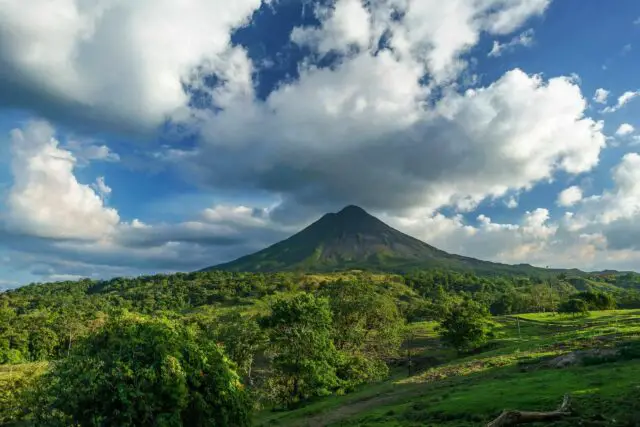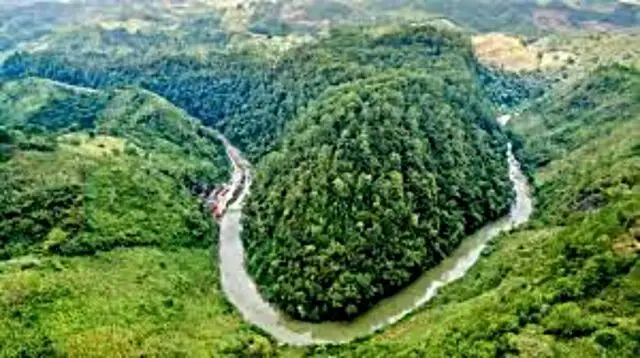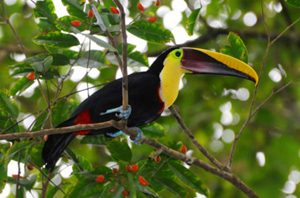Almost 2 million people are enchanted by the magical beauty of Costa Rica. Those who, year after year, choose Costa Rica as a tourist destination, receive a promised gratification: a unique destination in the world that offers, in a very small geographical space; the most abundant biological wealth that any country can offer in the same proportion of area.
The grandeur of nature added to the kindness of a people that transmits love for peace and the joy of interacting and learning from visitors, makes visiting the country a magical experience.
But that is not strange; Costa Rica is an extraordinary refuge for life, in whose territory of just 51 thousand square kilometers, which represents about 0.03% of the planet’s surface, is approximately 5% of the world’s biodiversity. In a matter of minutes, tourists visiting Costa Rica can enjoy all this biological diversity thanks to the fact that, from the capital, San José, to the most remote corners of the country, there is a wide network of highways and roads that covers more than 36,447 kilometers.
The natural riches of Costa Rica are so spectacular that they have deserved worldwide recognition. That is why great efforts have been made to orient the tourist offer towards sustainable development, which seeks to generate economic and social benefits based on the protection and conservation of ecosystems and natural resources.
Many volcanoes…
In a single day it is possible to visit the natural wealth of the Pacific Coast, as well as the exuberance of the Atlantic Coast. This is another of the qualities that make the country an exceptional destination, different and full of natural surprises. Would you have imagined that it was possible to observe and even descend through the crater of a volcano? This unimaginable adventure can be lived in Costa Rica, no matter what time of year you want to do it.

Among the 11 volcanoes located in the Central and Guanacaste mountain ranges, the visitor will be able to face, among others, the imposing Poás volcano and observe how the mist discovers its main crater, classified as one of the largest in the world, a huge hole of almost 2 kilometers in diameter and 300 meters deep.
If the Poás volcano is a moving sight, the Irazú volcano is no less. For the first man to set foot on the moon, Neil Armstrong, there is precisely no other place more similar to that star than the Irazú volcano. The very low temperatures of the place, its magnetism, the visual impact of its landscape, will remain forever in the memory of those who visit it.
Since 1968, on the other hand, the constant activity of the Arenal volcano has caused thousands of scientists, especially geologists and volcanologists, to have become passionate about its behavior. Its rumbles are reminiscent of the boundless force of nature.
Its incandescent lava descending through the mountain range is a spectacle that with a little luck, many will have the opportunity to observe.
Continuing with the volcanic attractions of Costa Rica, we must mention the Rincón de la Vieja volcano, located on the south side of the Guanacaste mountain range, where the areas known as Las Pailas and Las Hornillas are also found. In these places, the scenic beauty represented by the combination of mountains, forests, clear or cloudy skies, varies according to the place, the flora and the birdlife. All this leaves traces in the memory of those who decide to enter this wonderful adventure.
Natural challenge
Frequent winds, cold drizzles, temperature changes, blue sky, constant challenges to nature, are situations that all people who have dared to climb, the Chirripó hill, the highest mountain in Costa Rica, located in the Cordillera de Talamanca. From its summit, at 3,820 meters, tourists can, when weather conditions allow, observe the two oceans that bathe the territory.
In the Chirripó area, considered a National Park, there are shelters at different levels of height. In order to have a comfortable night, you should bring enough warm clothing. The next day, visitors can explore the surroundings or climb the hill to its highest point.
Another of the highest points in the country is the Cerro de la Muerte, with an altitude of 3,491 meters. In the sector of the Pan-American highway that passes through the highest part of the hill, you can see the moor vegetation, characteristic for its stunted vegetation.
The mountainous geography of the country plays a very important role in its climate. Despite the existence of 2 clearly marked seasons, the dry and the rainy, the rainy seasons vary according to the areas of the country where they are registered.

In the Central Pacific area, for example, the rainy season takes place between May and November. In the North Pacific and the province of Guanacaste, on the contrary, the rainy season occurs from the month of May until the end of October. In the South Pacific, the phenomenon occurs from May to November. The rainfall regime changes again in the Caribbean where the rains appear from May to August and from November to December.
This allows visitors to plan visits to different places according to their tastes and preferences. Even in the rainiest months, mornings throughout Costa Rica tend to be sunny and beautiful.
Depending on the area, the country’s temperatures register medians of 24.9 °C (76.8 °F) in the lowlands; of 16.3 °C (61.3 °F) in the highlands and 20.0 °C (68.0 °F) in the Central Valley.
Natural watchers
Few countries in the world have had initiatives as valuable as those of Costa Rica to preserve the priceless treasure of its natural resources.
This has made it possible to have a vast National System of Conservation Areas made up of protected wild areas, close to each other, in order to preserve the richness of their ecological processes. This system groups: National Parks, National Monuments, Biological Reserves, Forest Reserves, and, among others, National Wildlife Refuges, distributed throughout the country.
Depending on the area that is visited, tourists will have the possibility of observing quetzals; 5 or 6 species of toucans, tapirs, deer, sloths and anteaters, monkeys, coatis and a great variety of tropical flowers.

Although the country has populations of large mammals, such as jaguars, ocelots and pumas, it is actually difficult to observe them. In addition to the mentioned animal species, the wild areas host around 13,000 species of plants, more than 2,000 species of diurnal butterflies, 4,500 nocturnal, 163 of amphibians, 220 of reptiles, 1,600 of fresh and saltwater fish, and 850 species of birds.

Costa Rica is one of the 6 places in the world where you can see the “arrival” of turtles. The main places where this phenomenon related to the nesting of turtles occurs are: Tortuguero, Playa Grande, Tamarindo, Ostional, and Playa Nancite.


